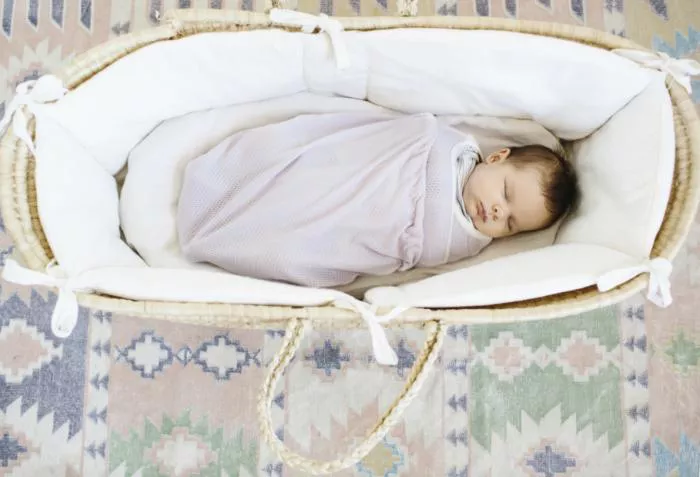Swaddling is a traditional practice that involves wrapping a newborn tightly in a blanket to provide a sense of security and comfort. Many parents use this technique to help their babies sleep better and feel more secure. However, determining how often a newborn should be swaddled is crucial for their safety and well-being. This article will explore the benefits and risks of swaddling, guidelines for safe swaddling practices, and recommendations for how often newborns should be swaddled.
Understanding the Benefits of Swaddling
Promotes Better Sleep
Swaddling can help newborns sleep more soundly. The snug feeling of being wrapped up can mimic the comfort of the womb and reduce the startle reflex, which can wake a baby from sleep. Many parents find that swaddling helps their baby fall asleep faster and stay asleep longer.
Provides a Sense of Security
Newborns are used to being in a confined space inside the womb. Swaddling can provide a similar sensation, making them feel more secure. This sense of security can be comforting and soothing for babies, especially during the early weeks of life.
Reduces Excessive Movement
Swaddling can limit a baby’s movements, which may help prevent accidental scratching or knocking over objects. This can be particularly useful for newborns who are still developing motor control and coordination.
Safe Swaddling Practices
Use a Lightweight Blanket
Choose a lightweight and breathable fabric for swaddling to avoid overheating. Overheating is a risk factor for sudden infant death syndrome (SIDS), so it is essential to ensure that your baby is comfortable and not too warm.
Ensure Proper Hip Positioning
Swaddle your baby with enough room around their hips to allow for natural movement. The swaddle should not be too tight around the hips, as this can lead to hip dysplasia. Make sure there is space for the baby’s legs to move and bend at the hips.
Swaddle with Arms in or Out
Some parents prefer to swaddle with the baby’s arms in to mimic the womb environment, while others opt to leave the arms out. As the baby grows, it may be beneficial to start swaddling with arms out to allow for more freedom of movement. Pay attention to your baby’s cues and adjust accordingly.
Monitor for Signs of Overheating
Regularly check your baby’s temperature to ensure they are not too hot. Signs of overheating include sweating, flushed skin, or rapid breathing. If you notice any of these signs, remove some layers or adjust the swaddle.
How Often Should Newborns Be Swaddled
Swaddle for Sleep Times
Swaddling is most commonly used during sleep times. You can swaddle your baby before naps and at night to help them settle down and feel secure. However, avoid swaddling during every sleep session if it is not needed. Pay attention to your baby’s sleep patterns and adjust swaddling practices accordingly.
Avoid Overuse
While swaddling can be beneficial, it is important not to overuse it. Too much swaddling may lead to dependency, where the baby struggles to sleep without being swaddled. Gradually introducing other sleep strategies and reducing swaddling time as your baby grows can help avoid this issue.
Observe Developmental Cues
As your baby develops and starts showing signs of rolling over or increased mobility, it may be time to stop swaddling. Most experts recommend discontinuing swaddling by around 2 to 4 months of age, when babies are becoming more active and may start rolling onto their stomachs. Swaddling at this stage can pose a risk of suffocation if the baby rolls over while swaddled.
Consider Alternative Comfort Techniques
If you find that swaddling is not working well for your baby, consider other comfort techniques. Gentle rocking, white noise, or using a pacifier can provide similar soothing effects without the need for constant swaddling.
Risks and Precautions
Avoid Swaddling Too Tightly
Swaddling too tightly can restrict a baby’s movement and affect their development. Ensure that the swaddle is snug but not restrictive, particularly around the hips. A tight swaddle can increase the risk of hip dysplasia and other complications.
Watch for Signs of Discomfort
If your baby appears uncomfortable or fussy while swaddled, it may be a sign that the swaddle is not fitting properly or that they are too warm. Adjust the swaddle or discontinue use if needed.
Be Mindful of Safe Sleep Practices
Always follow safe sleep guidelines to reduce the risk of SIDS. Place your baby on their back to sleep, use a firm mattress, and avoid placing soft bedding or toys in the crib. Swaddling should be part of a comprehensive approach to safe sleep.
When to Transition Away from Swaddling
Signs of Readiness
Transition away from swaddling when your baby shows signs of readiness, such as rolling over or attempting to break free from the swaddle. These developmental milestones indicate that your baby may benefit from more freedom of movement.
Gradual Transition
To make the transition easier, gradually reduce swaddling time. Start by swaddling for shorter periods or using a sleep sack that provides a similar feeling of security without restricting movement.
Introduce New Sleep Routines
As you phase out swaddling, introduce other sleep routines and comfort techniques to help your baby adjust. Consistency and a comforting bedtime routine can support your baby’s transition away from swaddling.
See also: How Much Sleep Does a 1-Week-Old Need?
Conclusion
Swaddling can be a helpful practice for soothing and comforting newborns, but it is important to use it appropriately and in moderation. By following safe swaddling practices and paying attention to your baby’s developmental cues, you can ensure that swaddling provides the benefits of comfort and security without posing risks. Understanding how often to swaddle and when to transition away from it will help support your baby’s growth and development while maintaining safe sleep practices.


